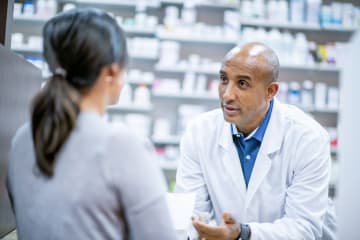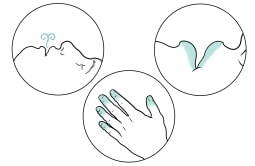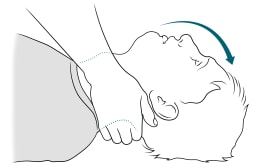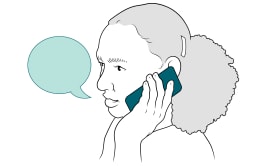
What is naloxone?
Naloxone is a medicine that reverses the effects of an opioid emergency. Opioids are strong pain medicines. Examples include hydrocodone, oxycodone, fentanyl, and morphine. Heroin is also an opioid.
Taking too much of an opioid can slow or stop your breathing. This is an emergency. If naloxone is given soon enough, it may save a life.
Naloxone comes in a rescue kit you can carry with you. You may hear it called a Narcan kit.
The rescue kit may contain:
- A nasal spray device that contains the medicine.
- The medicine along with syringes and needles.
Your doctor can give you a prescription for a rescue kit and show you how to use it. In some places you can get kits without a prescription.
Who should have a naloxone kit?
Naloxone kits save lives. Keep one with you at all times if you or someone you know:
- Takes any opioids, whether prescribed to you or to someone else. This also includes heroin and methadone.
- Takes opioids with alcohol or medicines that make you sleepy, like benzodiazepines ("benzos," Xanax, Valium, or Klonopin).
- Uses cocaine, meth or other illegal drugs. They could be mixed with unknown amounts of opioids.
- Has a history of substance use.
- Has had an opioid emergency before.
If you accidentally take too much of an opioid, you may not be able to give yourself naloxone. Make sure that your family and friends know you have a kit. Tell them how and when to use it.
When is naloxone used?
Naloxone is used when a person shows signs of an opioid emergency. A person may have taken too much of an opioid if they have:
- Slow, shallow, or stopped breathing.
- Pinpoint pupils.
- Blue or purple lips or fingertips.
- No response when you ask questions, shake the person, or rub the person's breastbone with your knuckles.
Make sure your family and friends know about these signs of an opioid emergency.
If someone appears to have taken too much of an opioid, call 911. This is an emergency.
How is it used?
If you take too much of an opioid, you may not be able to give yourself the medicine. So it's very important that your friends and family know how and when to give it to you.
Rescue kits come with instructions. There are two ways to give the medicine:
- Nasal spray.
- This is the simplest method.
- The mist is sprayed into the nose of a person who is having an opioid emergency. The person should be lying down when the mist is sprayed.
- Injection with needle and syringe.
- Follow the instructions very carefully.
- The medicine can be injected through clothing.
Symptoms of an opioid emergency may return a few minutes after the first dose from the rescue kit. If that happens, a second dose is needed. Rescue kits may come with two doses for that reason.
Keep your rescue kit with you always. You never know when someone might need it.
If you think you or someone else may be having an opioid emergency but you're not sure, use the kit anyway. Aside from going through withdrawal, which may be uncomfortable, there is no danger in using this medicine.
Go to the emergency room or call 911 right away. More treatment may be needed.
How do you give naloxone nasal spray?

1. Check to see if the person is responsive.
Look for a response when you ask questions or shake the person.

2. Look for signs of an opioid emergency.
These include:
- Slow, shallow, or stopped breathing.
- Blue or grayish lips or fingertips.

3. Put the person on their back.
Tilt their head back.

4. Put the nasal spray tip in one nostril.
Push firmly on the plunger.

5. Call 911, or ask someone else to call.
- Follow the 911 operator's directions.
- If the person doesn't respond after 2 to 3 minutes, give another dose in the other nostril.
- Naloxone spray can't be reused. A new nasal spray is needed for a second dose.

6. Reposition the person, and wait for help.
- When the person starts breathing, lay them on their left side with their right knee bent and the left arm above their head.
- Put their right hand under their head to support it.
- Stay with the person until help arrives.
Where can you learn more?
Go to http://www.healthwise.net/patientEd
Enter Q404 in the search box to learn more about "Learning About Take-Home Naloxone Kits for Opioid Emergencies".
Current as of: December 9, 2025
Author: Ignite Healthwise, LLC Staff
Clinical Review Board
All Ignite Healthwise, LLC education is reviewed by a team that includes physicians, nurses, advanced practitioners, registered dieticians, and other healthcare professionals.

